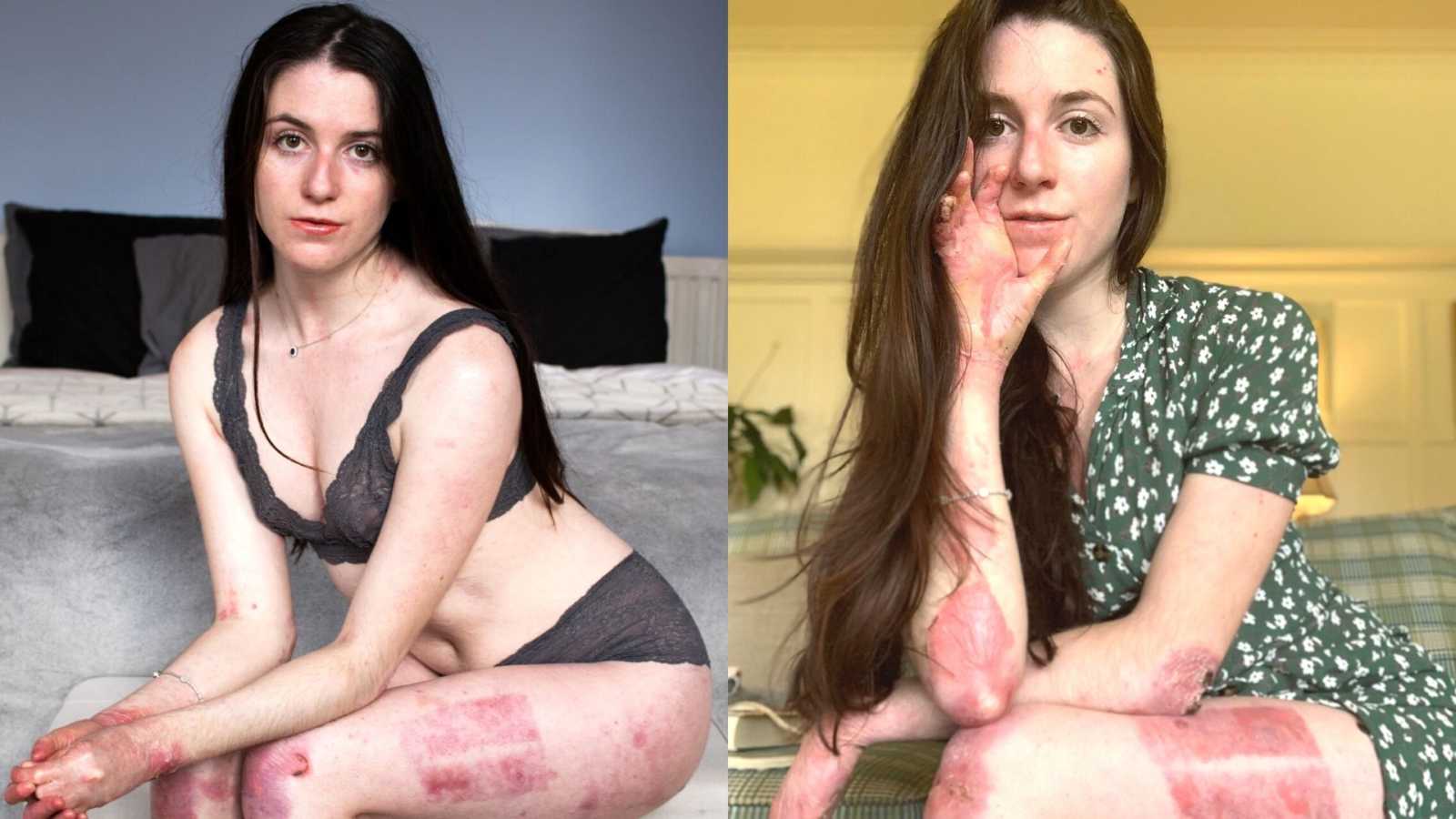“I have Recessive Dystrophic Epidermolysis Bullosa, a terminal genetic condition with an average life expectancy of 18 years old, and currently without a cure. I am about to turn 21.
My condition, often called EB, is so rare it is called, ‘the worst disease you’ve never heard of.’ Our children will have a 1 in 1.5 million chance of being born with my exact subtype-RDEB Inversa. I lack collagen seven, the connecting fibril that anchors your top layer of skin to your bottom layer of skin. It is a genetic condition without a cure, and it is considered to be terminal. This means my skin is more fragile than other’s…if I fall down, often instead of bruising I will get an open wound or blister similar to a third degree burn. My scarring looks like burn scars. However, I am very stubborn so it has not stopped me from doing what I want. I snowboard, dance, do yoga, horseback ride, really anything I desire. It is an incredibly painful condition that affects every aspect of my body, including my eyes, which can skin themselves overnight.

I was diagnosed shortly after birth, so I grew up with my condition next to me like a shadow. I was born with a blister on my hand which continued to grow, and whenever the nurses removed a monitor from my skin, it took the skin away with it. It was clear to the doctors in Austin and my mother this was not normal for any newborn, even with fragile newborn skin. I was lucky to be diagnosed very quickly and the diagnoses was then confirmed with genetic testing.
I was a sick child. I was heartbroken when I had to miss school. I was very sociable with loads of friends, but most of all I wanted to learn. I was very upset when I had to miss out on learning! My mom didn’t even need to tell me that I had to stay home. It was clear to me I was in too much pain to leave the house. After so many days of being sick and watching the same cartoon episodes almost daily, I was bored. I HAD to miss out on school, but I didn’t WANT to miss out on learning. So I learned how to read. When I finished reading children’s books with my mom, I moved on to children’s poetry. If I wanted a change, I moved on to adult literature and the classics. When I couldn’t read, if I just felt too bad or I had wounds on my eyes which prevented me from seeing, I listened to audiobooks.

And when I wanted more than just books, or if I felt there was a story I wanted to read, I began to write. I wrote as much as I could; in bed, in the car, even at the hotel after a throat surgery. I could adapt with the ease of a child who is used to being uncomfortable. These days were the most valuable of my life, as they allowed me to realize that the only thing EB couldn’t touch was my ability to learn. I wanted that notion to carry me as far as it possibly could.
My condition affects everyone around me, my family, my boyfriend, my friends…they are all worried for me every day. I met my boyfriend on our first day of university at St. Andrews in September of 2017. He supports me in every way I can think of, he even came down to London and stayed with me for the full month of my surgery, coming into the hospital to be with my on his own birthday.
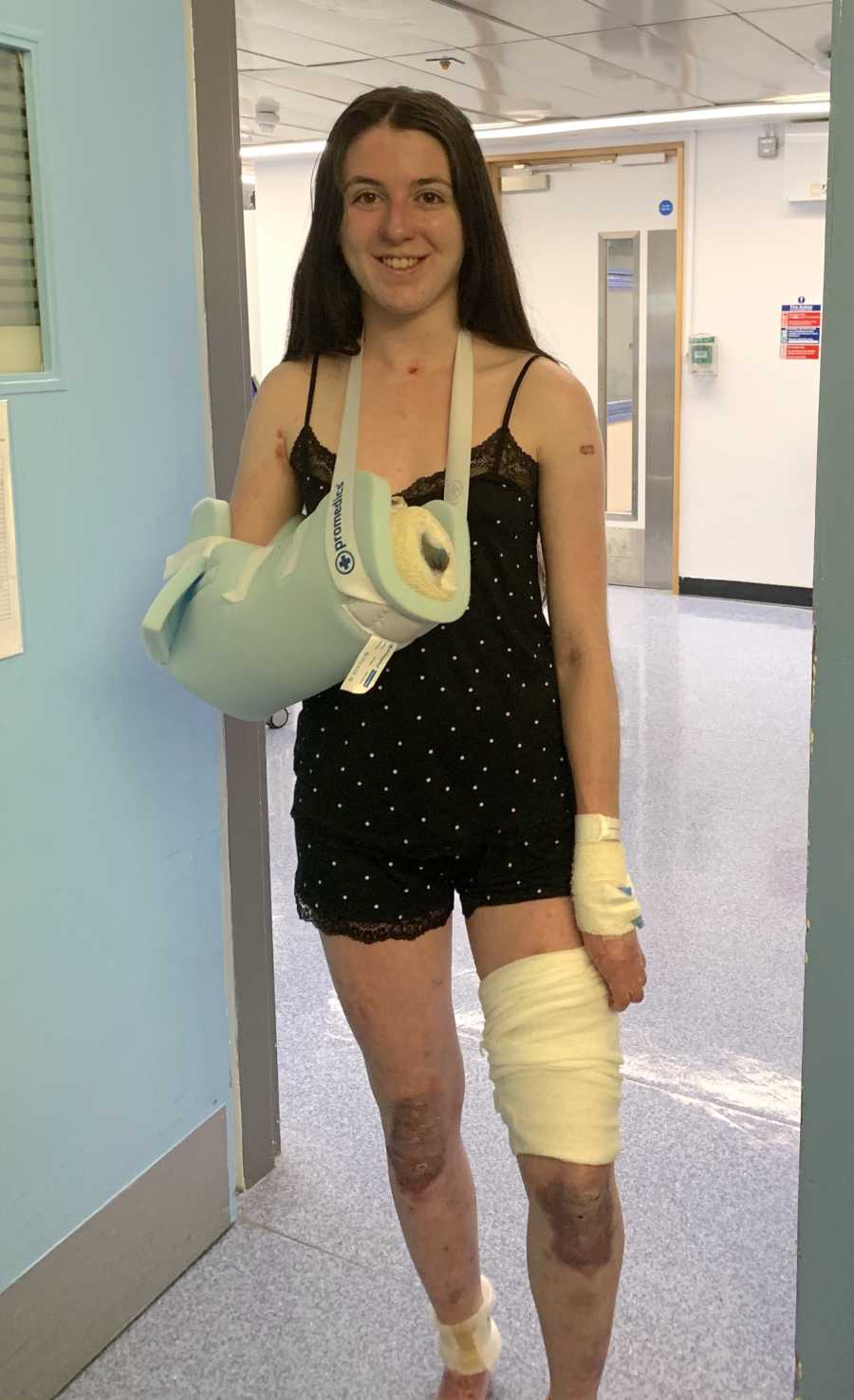
I have had over ten surgeries on my throat and have recently had a surgery on my hand to release the scar tissue. I will have dozens more of each surgery throughout my life. The majority of my surgeries were for the scarring in my throat. Scar tissue does not stretch over time, it contracts, and this is still true for the tissue in my esophagus. The scarring will essentially cause my throat to close, which is of course very dangerous. The surgery had my surgeons inflating a balloon in my throat while I was asleep. Surgery on someone with my condition is always risky as our airways can be fragile as well. I have had over a dozen of these procedures from the time I was 13 to 17.
My most recent surgery was to release the scar tissue that was restricting the movement of my right hand, causing the fingers to web. This surgery took place over three weeks in London, and I spent many nights in the hospital, then had to wear a painful stiff cast for a month to make sure my fingers wouldn’t immediately bend back. My hand is still healing.
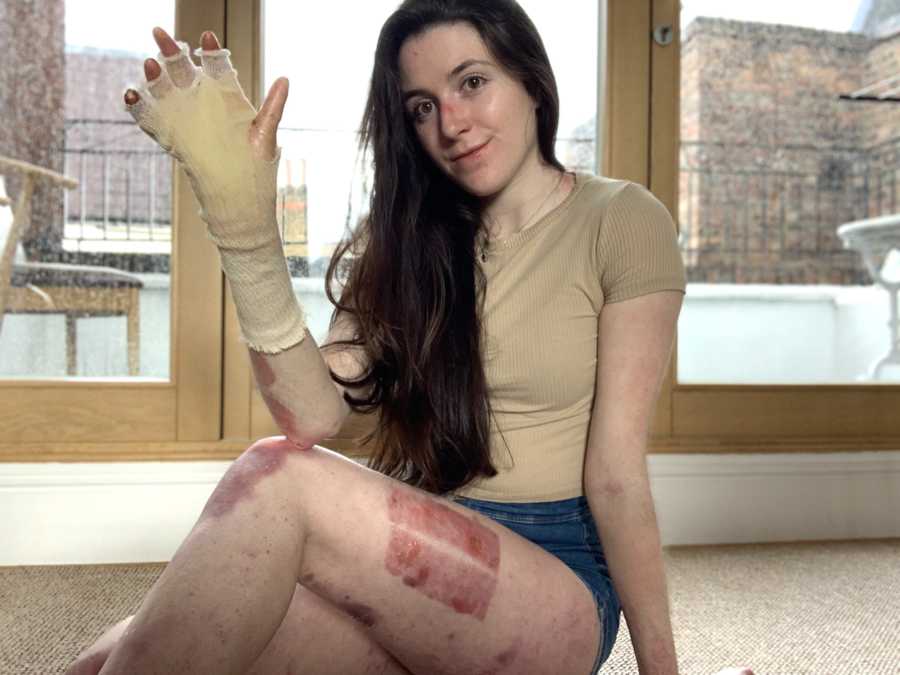
When I was 17, we had a hot day in Santa Fe, New Mexico. I wore shorts to pick up my dog from the vet. My legs were exposed with the full effects of my condition on display. At the vet’s office I sat down next to a woman on her phone. She immediately looked me over and said, ‘You look like you’ve been mauled by a gorilla. What happened to you?’ I responded with a lie, I felt like she didn’t deserve to know my story, or to know my life. When I got in the car I sobbed to my mother on the phone, and she told me, ‘Why don’t you write about it.’ So I did.
To my amazement, people listened. My first article was published in the Huffington Post before my 18th birthday. I’ve since been in the New York Post, The Daily Mail, and many others. I am honored I also had the opportunity to complete a Ted Talk with my university about the stigmas surrounding visible disabilities. My article was about how it felt to have a terminal diagnosis but still be alive. It was amazing to find out I was going to be published. I’d emailed Ariana Huffington and pitched my idea to her myself, so when I saw her response in my inbox I couldn’t believe it. It was incredible.
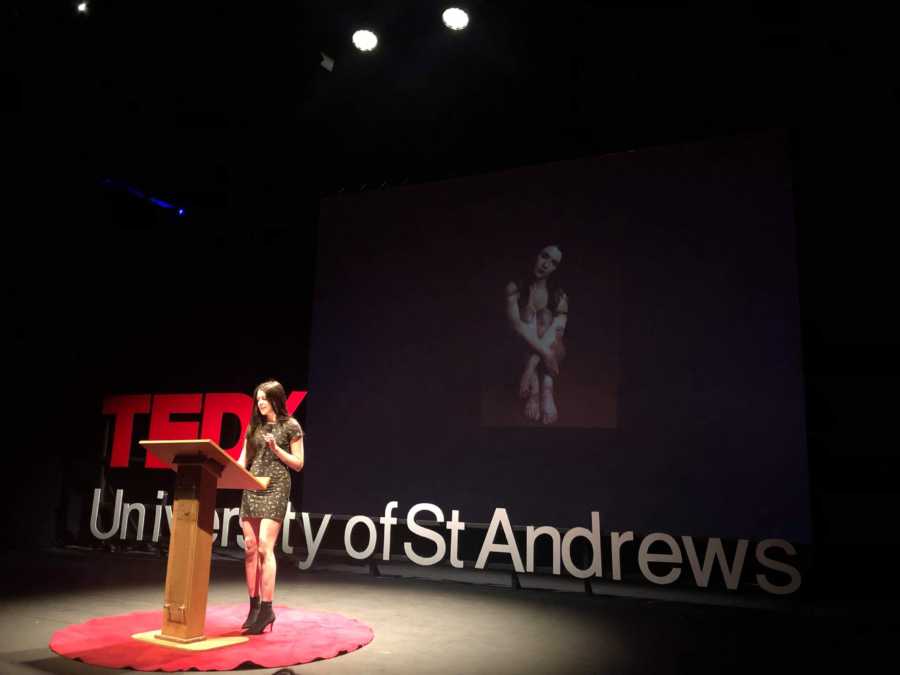
When I’m not studying at my university, I am campaigning for awareness. While I often write for magazines both online and in print, I also share photos of my daily life or struggles to my Instagram. It is an amazing outlet to raise awareness, and I am honored to have a growing following. I also model to raise awareness when I can. I am often asked about my modeling career, and I always respond that I don’t have one, I’d much rather be working in a museum or an auction house.
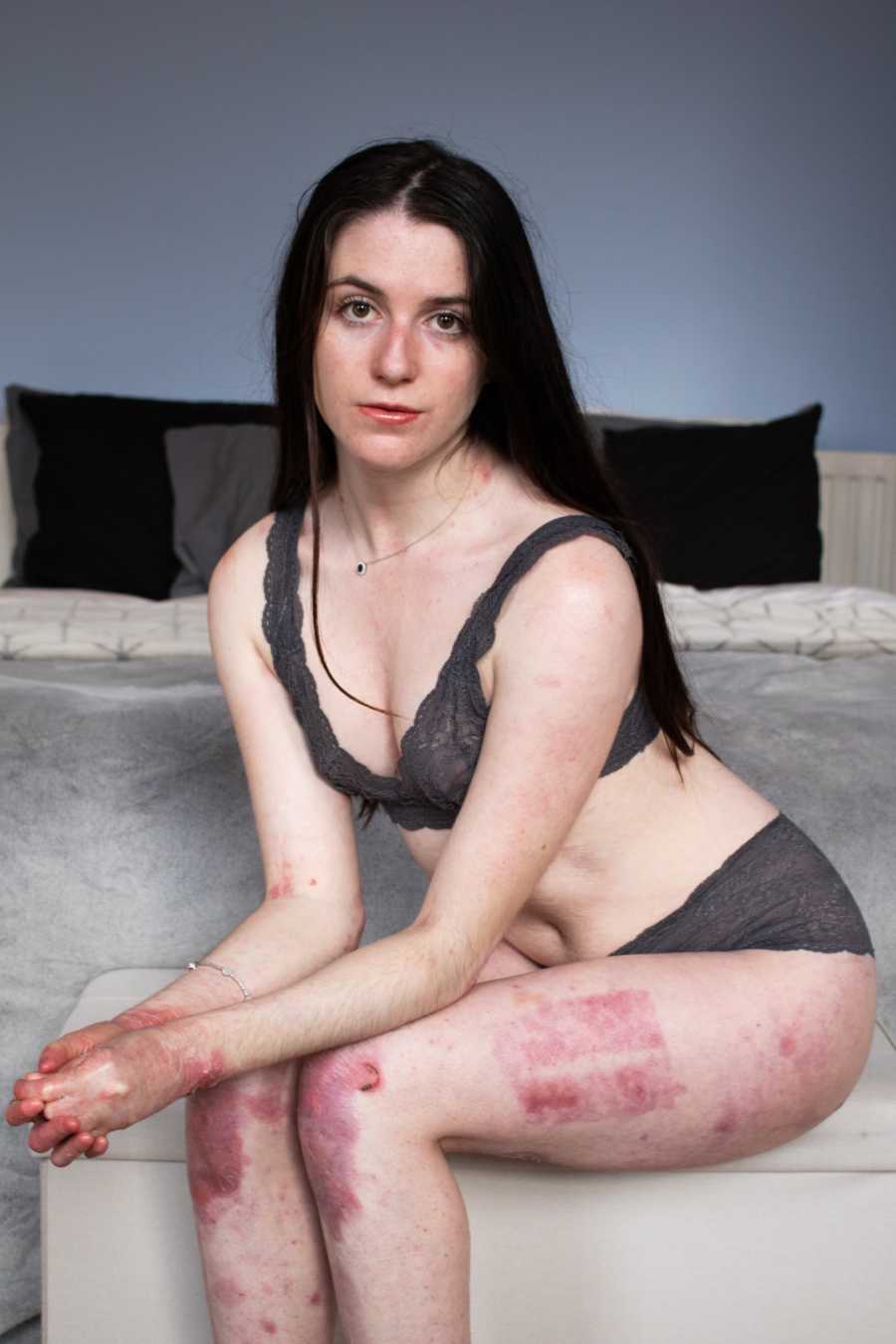
In early October I was leaving my grocery store in St. Andrews. An older woman was staring at me, and I felt the familiar rush of blood heat my cheeks and anger rise in my throat. Instead of asking questions about a body that wasn’t hers, she smiled widely. ‘I think I saw you in a magazine!’ She said. I exhaled and laughed, confirmed that she had. She said she read my story in an airport, saw the pictures taken by Sophie Mayanne for Behind the Scars, told me how beautiful I was and asked more about my condition. I was floored by the conversation, and amazed at how much the dialogue surrounding my condition could change. I realized that I could control how I view myself and my body. Yes, I am covered in scars, I can’t change that. But should I view my body as something negative, something to fight against and hate, or as something amazing. Look how hard it works to keep me alive! I am proud to have the life I have, EB, surgeries and all.
You are not your body, and you are not your diagnosis. This is not not what defines you! You are so much more. Your body contains your mind, your soul, your heart, and continues to work for you every day. And that is amazing. Don’t see it as something to fight against, but with.
For my future, I hope to publish my book, get my PhD, and continue to be as happy as I am right now. My diagnosis is still with me, and I don’t know how soon my health could change, but for now I am healthy and we don’t see it as something that can stop me anytime soon. I am hopeful for the future.”
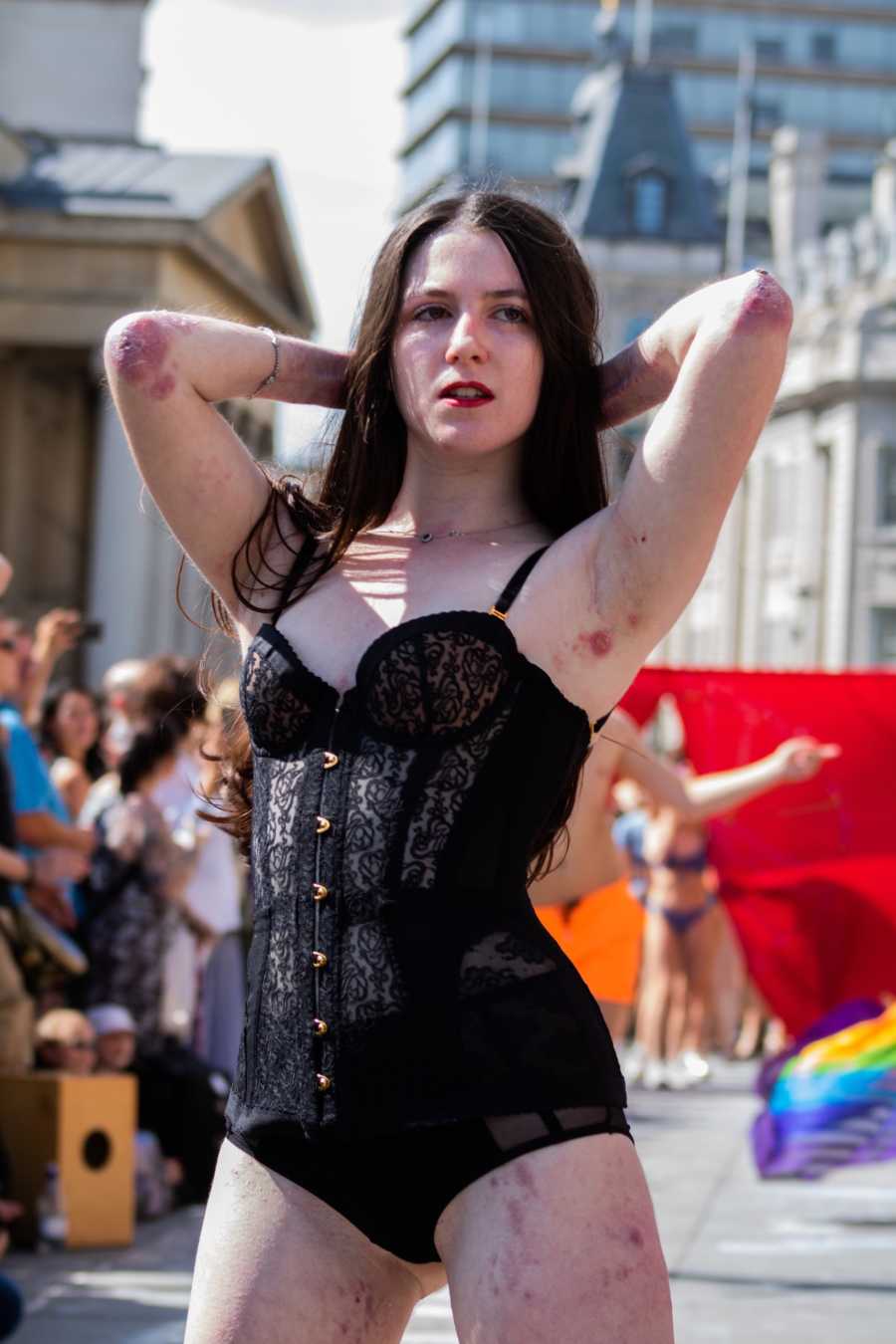
This story was submitted to Love What Matters by Lucy Beall of St. Andrews, Scotland. You can follow her on Instagram and read her article. Do you have a similar experience? We’d like to hear your important journey. Submit your own story here. Be sure to subscribe to our free email newsletter for our best stories, and YouTube for our best videos.
Read more amazing stories about people living full lives with incurable diseases here:
Do you know someone who could benefit from this story? Please SHARE on Facebook and Instagram to let them know a community of support is available.

